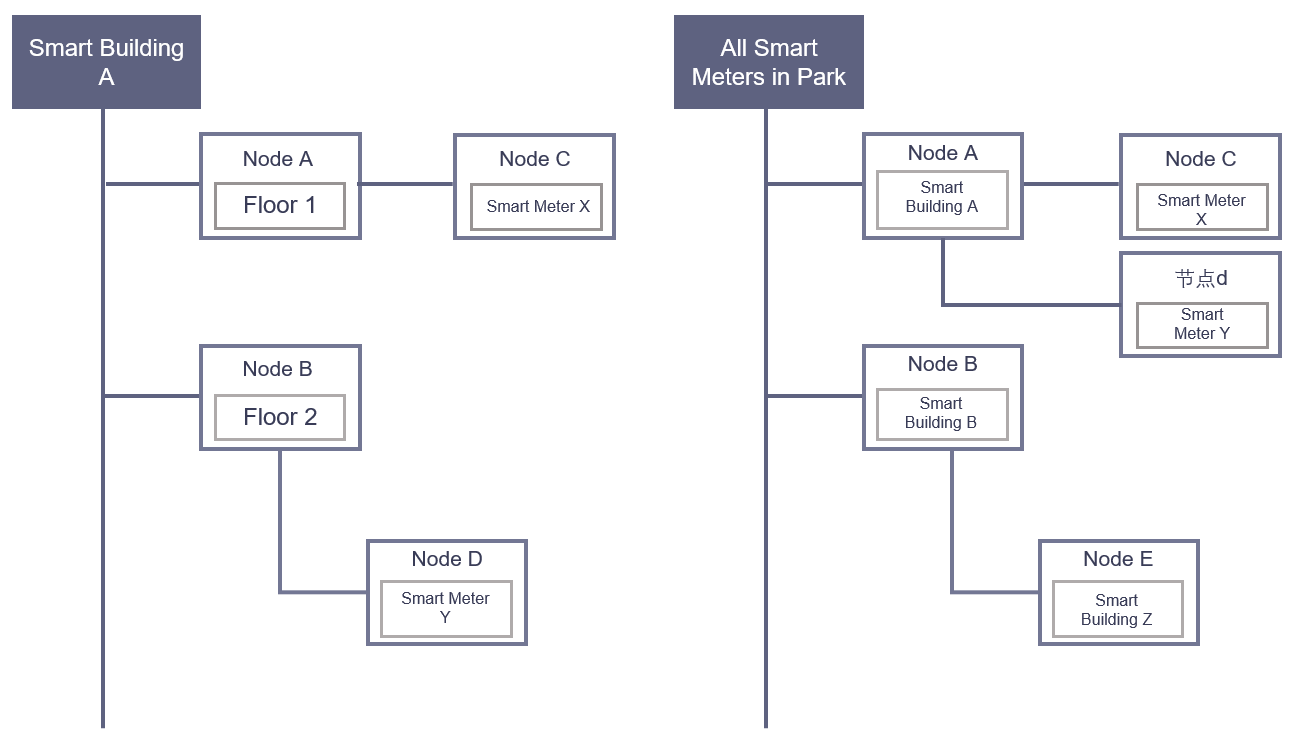Asset Tree Overview¶
Asset tree is a key function of the Asset Management service of the EnOS IoT Hub. Asset tree is mainly for asset owners who understand the enterprise asset management business where they can quickly create the asset topology to manage assets in the cloud.
The asset tree management is decoupled from device provisioning, which means that the device provisioning operation is independent from the asset tree management. Therefore, you can complete device provisioning first and then bind the connected devices to the nodes of the asset tree. You can also create an asset tree before you provision and connect the devices. Generally, a connected device is usually bound to a node of the asset tree.
Key Concepts¶
Asset Tree¶
An asset tree is the hierarchical organization of assets. An asset can be added to multiple asset trees so that the assets can be managed from different dimensions for different business scenarios. Scenarios for multiple asset trees include:
Management based on geographical location: country, state, city, district, etc.
Management based on industry domain: wind power, photovoltaic, energy storage, etc.
Management based on device type: fan, inverter, combiner box, etc.
For the scenarios above, you can create three asset trees for the same group of assets.
Node¶
A location on an asset tree to which you can bind an asset.
Asset¶
An asset is the minimum element that can be bound to a node on an asset tree.
Assets can be divided into device assets and logical assets.
Device asset: A physical device, for example, a photovoltaic inverter, or a wind turbine.
Logical asset: Can be a place to contain devices or a collection of devices, such as a site, an area, or a floor.
Limitations and Impacts¶
Each asset on an asset tree has a unique identifier. An asset can be bound to different asset tree nodes but must be unique under one asset tree. The relationship between asset trees, assets, and devices is shown in the following figure.

If a user deletes a device or logical asset in Device Management, the corresponding asset bound to the asset tree node will become an invalid node.
You can bind assets to sub-nodes under every valid node on an asset tree. The maximum layers that an asset tree can have is 7, including the root node layer. On each layer (except the root layer), a maximum of 10,000 peer nodes are allowed to exist.
The maximum number of asset trees that can be created is 100.